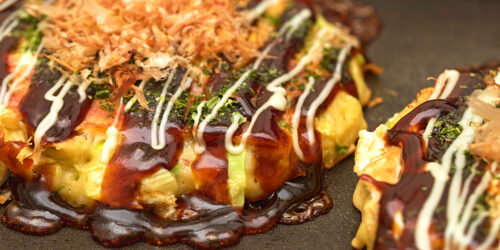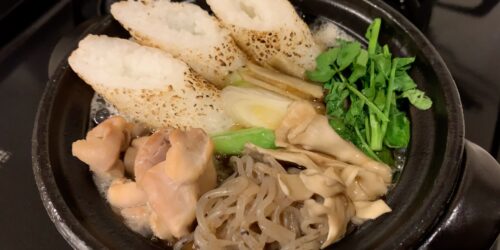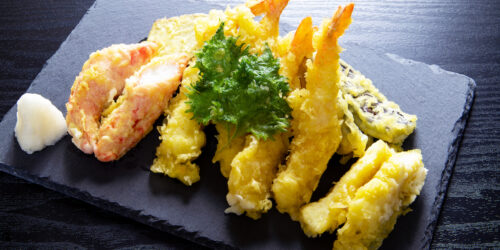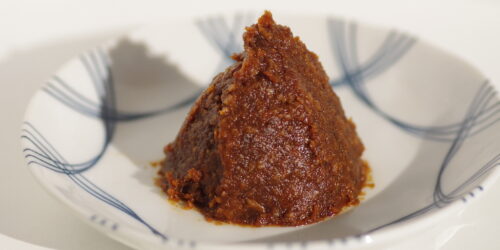Is Japanese Food Good for Weight Loss?
Have you ever wondered why Japanese people tend to have lower rates of obesity compared to many Western countries? While lifestyle factors play a role, the traditional Japanese diet is often cited as a key contributor to overall health and weight management. But is Japanese food really good for weight loss? The answer is a nuanced “yes,” and this article will explain why, even if you’re completely new to Japanese cuisine.
Before We Dive In: Watch This!
At the top of this article, you’ll find a video of my own creation: “Low Calorie High Protein Bowls.” These bowls are inspired by Japanese donburi (rice bowl dishes) but are specifically designed to be weight-loss friendly. Watching the video will give you a practical, visual example of the principles we’ll discuss below, and show you how easy it can be to incorporate Japanese-inspired meals into your own diet. You’ll see firsthand how to build a balanced, satisfying, and delicious meal that supports your weight loss goals.
The Core Principles of Traditional Japanese Food (That Aid Weight Loss)
The traditional Japanese diet, often referred to as washoku, isn’t a “diet” in the restrictive sense. It’s a way of eating based on several key principles that naturally promote healthy weight:
Emphasis on Fresh, Whole Foods: Japanese cuisine prioritizes fresh, seasonal ingredients. Think plenty of vegetables (seaweed, daikon radish, mushrooms, leafy greens), fish and seafood, and minimally processed foods. This naturally reduces the intake of unhealthy fats, added sugars, and artificial ingredients.
Portion Control (Hara Hachi Bu): The concept of hara hachi bu encourages eating until you’re 80% full. This mindful eating practice prevents overeating and helps you become more attuned to your body’s natural hunger and fullness cues. Japanese meals are often served in smaller, individual dishes, which visually reinforces portion control.
Rice as a Staple (But Not the Only Star): While white rice is a staple, it’s usually served in smaller portions compared to Western meals. It’s also typically accompanied by a variety of other dishes, ensuring a balanced intake of nutrients. The focus is on the variety of the meal, not just the carbohydrate portion.
Lean Protein Sources: Fish, shellfish, tofu, edamame, and natto (fermented soybeans) are common protein sources. These are generally lower in saturated fat than many Western protein sources like red meat. Lean protein is crucial for weight loss because it helps you feel full, boosts metabolism, and preserves muscle mass.
Healthy Fats (in Moderation): While not a high-fat cuisine, Japanese food incorporates healthy fats from sources like fish (omega-3 fatty acids), sesame seeds, and avocados. These fats are essential for overall health and can contribute to satiety.
Fermented Foods: Miso, soy sauce, pickled vegetables, and natto are fermented foods that are rich in probiotics. These beneficial bacteria support gut health, which is increasingly linked to weight management and overall well-being.
Cooking Methods: Japanese cooking often utilizes methods like steaming, grilling, simmering, and quick stir-frying, which require less added fat compared to deep-frying or heavy sauces.
Green Tea: Green tea, particularly matcha, is a common beverage. It’s rich in antioxidants and may have a slight metabolism-boosting effect.
Common Japanese Foods and Their Weight Loss Benefits:
Miso Soup: A low-calorie, flavorful soup often served with meals. The broth is hydrating, and the miso provides probiotics.
Sushi & Sashimi: While some sushi rolls can be high in calories due to added sauces and tempura, traditional sushi (nigiri) and sashimi (raw fish) are excellent sources of lean protein and omega-3s. Focus on options with fresh fish and vegetables.
Tofu: A versatile, plant-based protein source that’s low in calories and fat. It can be used in stir-fries, soups, and salads.
Edamame: Young soybeans, often served steamed and lightly salted. They’re a good source of plant-based protein and fiber.
Seaweed Salad (Wakame): Low in calories and packed with nutrients, including iodine, which is important for thyroid function (and metabolism).
Konjac/Shirataki Noodles: These noodles are made from the konjac plant and are extremely low in calories and carbohydrates. They’re a great substitute for traditional noodles in stir-fries and soups.
Things to Watch Out For:
Not all Japanese food is automatically healthy. Here are some things to be mindful of:
Tempura: While delicious, deep-fried foods like tempura are high in calories and fat. Enjoy them in moderation.
Ramen: While a popular comfort food, ramen broth can be high in sodium, and the noodles are often refined carbohydrates. Look for healthier versions with plenty of vegetables and lean protein, or make your own.
Sauces: Some Japanese sauces, like teriyaki and tonkatsu sauce, can be high in sugar and sodium. Use them sparingly.
White Rice: While a staple, white rice is a refined carbohydrate. Consider substituting brown rice occasionally, or focusing on smaller portions.
Added sugar: Some Japanese sweets and desserts are high in added sugar.
The Bottom Line:
Traditional Japanese food, with its emphasis on fresh ingredients, portion control, and lean protein, offers a solid foundation for a healthy weight loss plan. It’s not a magic bullet, but by incorporating the principles of washoku into your diet and being mindful of potential pitfalls, you can enjoy delicious, satisfying meals while working towards your weight loss goals. My “Low Calorie High Protein Bowls” video is a perfect starting point to see these principles in action! Remember that sustainable weight loss is about making long-term lifestyle changes, and Japanese cuisine can be a delicious and effective part of that journey.






